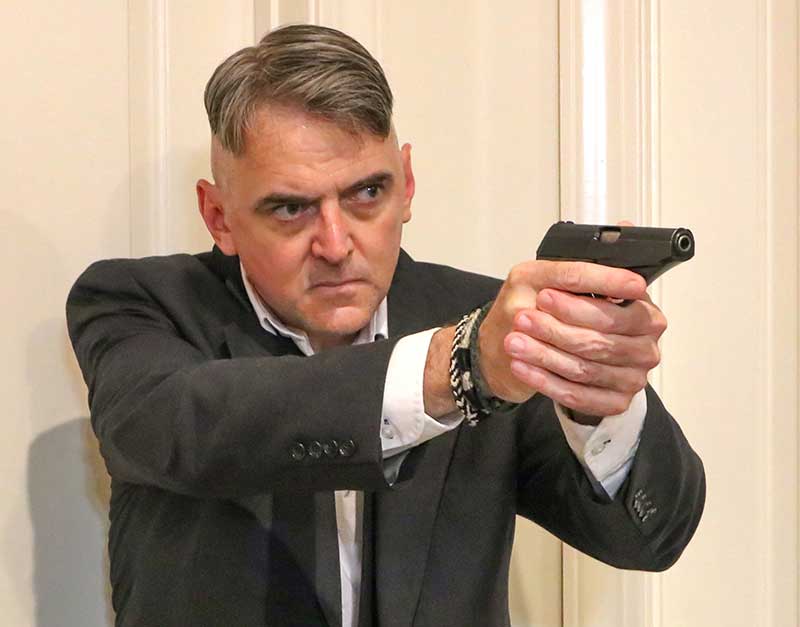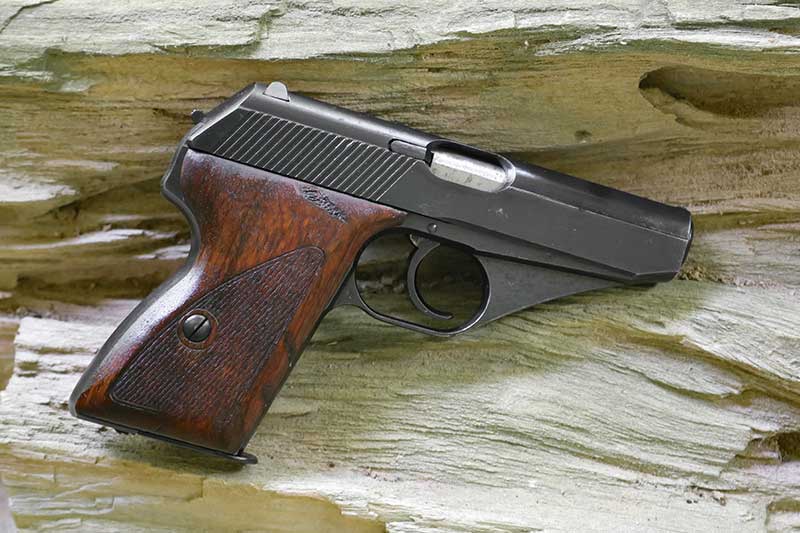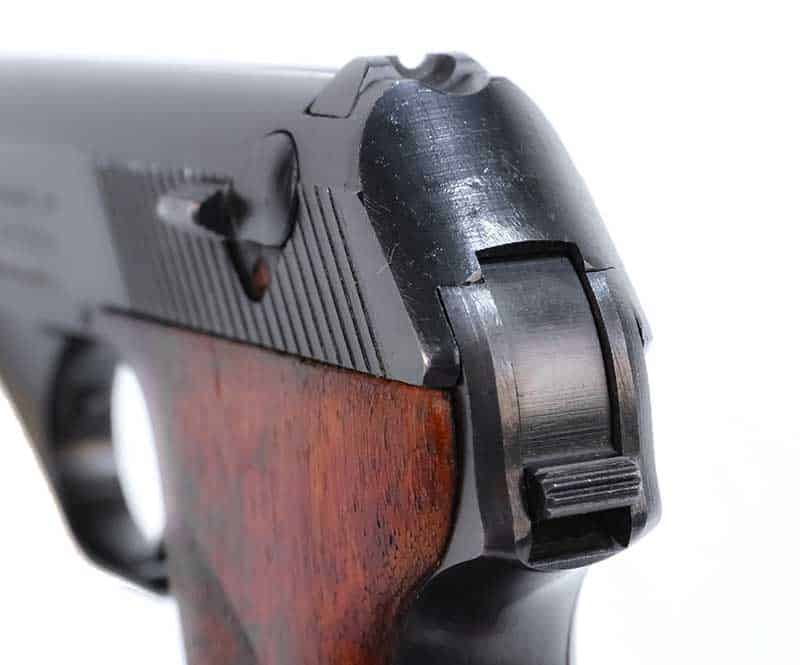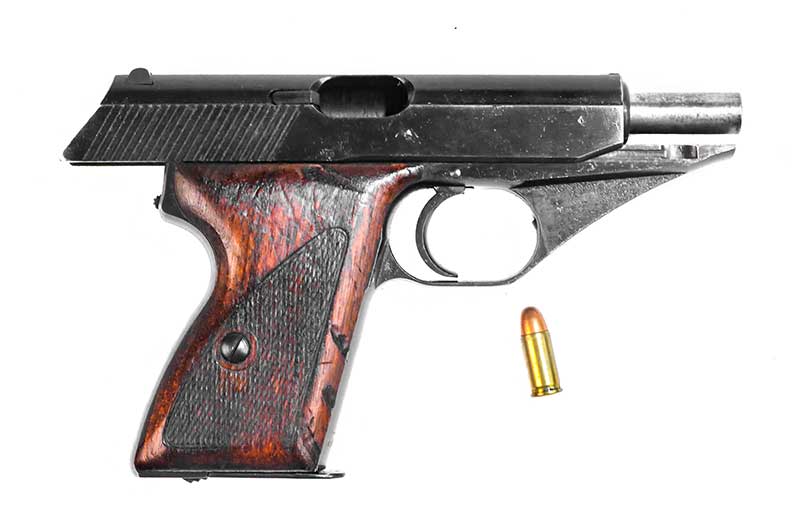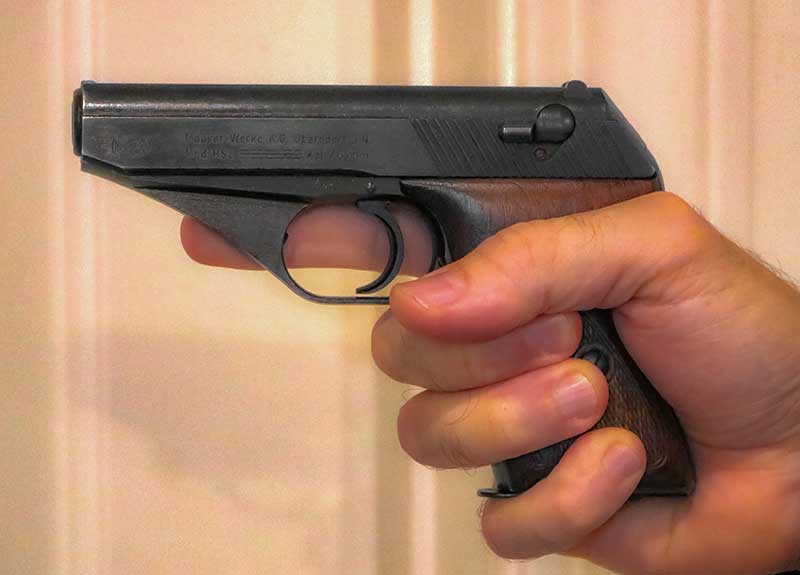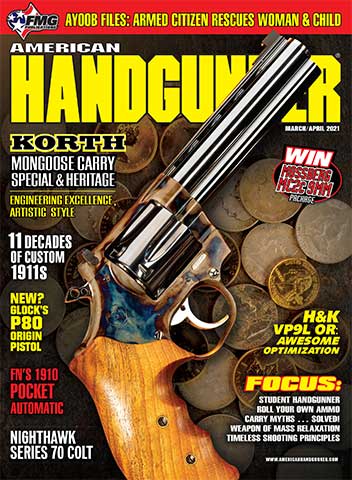The Mauser HSc
007’s Alternative History
Agent 007 sat quietly in the corner of the darkened bar nursing his signature Vodka Vargtass. The woman at his side was the kind of beauty who changed a room with her presence. However, James Bond this evening offered little more than small talk. His attention was on the large hirsute gentleman with the bejeweled eye patch on the other side of the establishment. When the man got up to leave, Bond disengaged from his preternaturally seductive companion and discreetly gave chase.
The large hairy man made his way to his Land Rover. By chance it was parked three cars down from Bond’s Jaguar F-Type. That was a good thing. Should events go sideways momentarily, Bond did not relish having to return to his Quartermaster “X” with yet another ventilated sports car.
As the hairy terrorist reached for his door his one good eye met Bond’s gaze. For a pregnant moment neither man moved. Then the SPECTRE operative produced a concealed GLOCK 18 from underneath his dinner jacket and began liberally spraying the car park.
Bar patrons fled in terror. Bond dropped behind a nearby Rolls and had his trim Mauser HSc automatic out in an instant. He waited for an interruption in the steady stream of bullets peppering the limo and stood erect. As the SPECTRE agent fumbled with his spare 33-round magazine, Bond laid his front sight on the man’s eye patch and squeezed. One evening’s wet work by 007 exercising his license to kill would set the SPECTRE organization back years.
Alternative History
James Bond. Women want him. Men want to be him. 007 is a paragon of manhood and the epitome of cool.
Ian Fleming penned 16 James Bond pieces during his career. A fun fact is he also wrote the children’s story Chitty-Chitty-Bang-Bang. One of the biggest reasons Fleming’s prose was both so popular and so compelling is he wrote from life. During World War II Ian Fleming was a spy.
As commander of 30 Assault Unit and later T-Force, Ian Fleming guided covert operations throughout the European Theater of Operations. His experiences with special ops during the war substantially influenced how he crafted the character of James Bond.
Bond was originally equipped with a .25-caliber Beretta 418. However, an avid reader and firearms enthusiast named Geoffrey Boothroyd wrote Fleming suggesting the 418 was really more of a lady’s gun. The two men established a friendship and together chose the Walther PPK as Bond’s new sidearm. In Dr. No Bond’s 418 catches on the waistband of his trousers and nearly gets him killed. From this point forward in the series, the PPK rides in Bond’s holster.
In appreciation for the advice, Fleming wrote Major Boothroyd into his books as Bond’s long-suffering quartermaster. We know him as “Q.” According to the backstory in the novels Q’s given name is Geoffrey Boothroyd.
Our introductory narrative was obviously fraught with canonical errors. Bond’s signature drink is a Vodka Martini, not a Vargtass, and he drives an Aston Martin, not a Jag. Additionally, his supply quartermaster obviously goes by “Q” and not “X.” However, what might have happened had Fleming and Boothroyd settled upon the Mauser HSc rather than the PPK that fateful night over drinks?
The Interloper
The HSc is actually the more advanced of the two designs. HSc stands for Hahn Selbstspanner or “self-cocking hammer,” and it represented the state-of-the-art in 1940 when it was introduced. There are certain mechanical aspects of this extraordinary concealed carry gun that have not been bettered even today.
The HSc is a remarkably trim and rakish design. The hammer is fully concealed save a small lip for manual activation, and there are no protruding ditzels to catch on clothing. Even the sights are settled into a trough on the top of the slide. The safety is a rotating lever on the slide that does not drop the hammer. To safe the gun, the operator puts the gun on safe, squeezes the trigger and rides the rotary hammer into the rest position. The trigger system can be fired either single or double action, and the magazine release is on the heel after the European fashion.
The HSc was produced in both .32ACP and .380ACP chamberings between 1940 and 1977. More than 334,000 copies were made, and the gun saw widespread service with German Heer, Police and Kriegsmarine units. At the end of the war production continued for the French. As near as I could tell all the .380ACP versions were made after the war.
The .380ACP versions fed from seven-round magazines while .32ACP variants packed eight. The gun sported a 3.4″ barrel and weighed 25-oz. empty. The action was simple unlocked blowback.
Trigger Time
The HSc is a true joy to carry. Opt for something with generous pockets and the trim little gun will ride comfortably in your right front. In practical terms, there is just nothing on the gun to snag.
The weird cylindrical hammer is indeed unusual, but you take its measure in the first magazine. The gun feels nice in the hand, and recoil is trivial given the weapon’s relatively anemic original chambering. However, I have a post-war .380ACP version that is indeed a bit snappy with its simple blowback action.
The top of the slide is cut with little wavy lines, ostensibly to minimize glare. However, the sights are so small they are really just there for looks. In practical applications such tiny pocket guns most typically become a point and click interface in a crisis and the sights are overlooked.
The coolest aspect of the HSc is its manual of arms. The weapon is designed to be carried with the hammer down and the safety off. In this configuration a long double-action revolver-style trigger pull is required to touch off the first round. Subsequent shots sport a shorter, crisper trigger pull.
I find most all little pocket pistols of this sort shoot about the same. If you want to pick off a man-sized target 300 meters distant there are better tools. However, if the fight is close and pitiless, the HSc is intuitive to use and painless to pack.
When the magazine runs dry, the slide locks back automatically of its own accord. There are no external controls to manage. Drop the empty magazine via the heel catch and slam in a fresh box. The slide drops of its own accord once the fresh magazine is fully seated. Nothing is faster, even today.
Denouement
Had Fleming and Boothroyd settled on the HSc over the PPK, the entire complexion of the pocket pistol world might have turned out differently. 007 has sold countless copies of the Walther PPK, and the guns remain in series production at the Walther plant in Arkansas even today. I myself carry one from time to time when I feel the need to be extra-awesome. By contrast the HSc, fine design that it was, sputtered along into the ’70s and then died a natural death.
However, truth be known, James Bond might not have actually gotten the best pistol.

